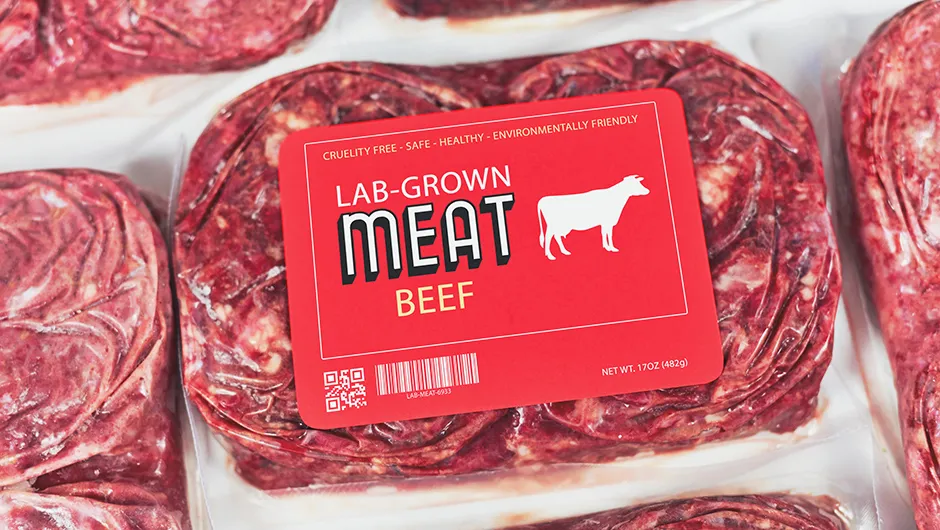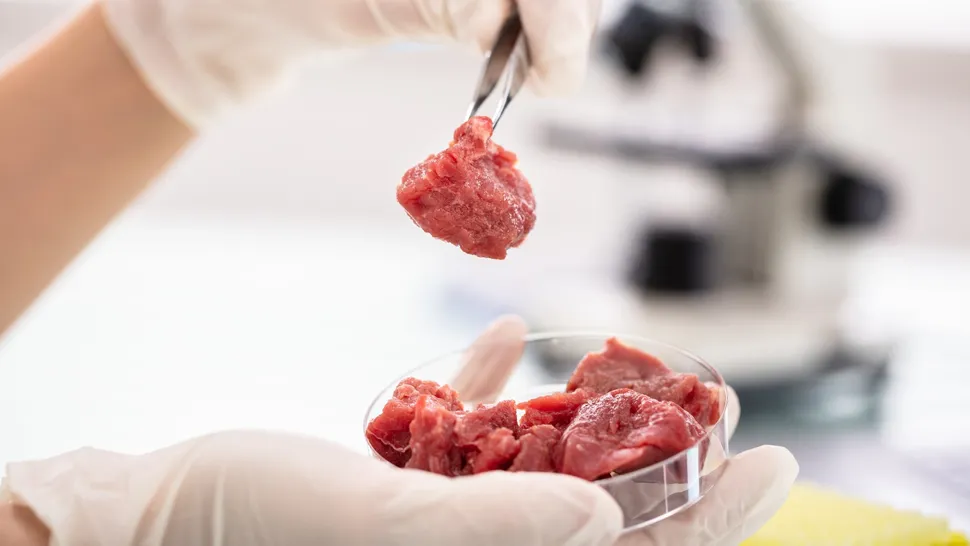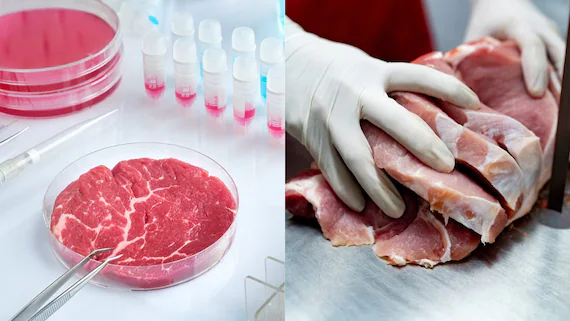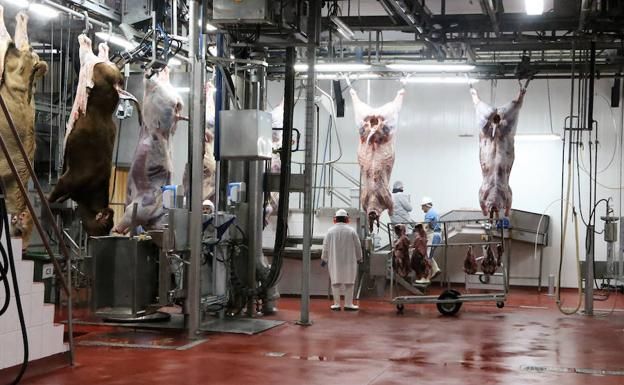Laboratory-Grown Meat: The Future of Food or a Threat to Health and Tradition?

Introduction
Imagine sitting in a restaurant somewhere in Africa, and a steaming plate of beef lands in front of you. But just before you take a bite, someone tells you that this beef never grazed a field, never breathed, and never bled. Yes, you heard that right. The meat before you did not come from a slaughtered animal but was instead grown in a laboratory by scientists. Would you still eat it?
With Africa’s population rapidly growing and global food demands surging, governments and private institutions are exploring innovative policies and strategies to secure the future of food. Food security, after all, remains one of the most critical pillars of a nation’s growth and stability.
Cultured meat, also called cultivated meat, is produced by culturing animal cells in-vitro, growing flesh that is molecularly identical to conventional meat, but outside of a living animal. Advocates point to its potential benefits in addressing food insecurity and reducing animal slaughter. Yet the big question lingers: Is this lab-grown meat truly the future of food production, or are there hidden risks that could challenge our health, culture, and traditions?

In Africa, where many communities still place strong value on natural order, biological processes, and traditional ways of preparing food, the debate cuts deeper. Could this scientific breakthrough boost sustainability and food availability, or will it be rejected as a cultural and health threat?
What Exactly Is Lab-Grown Meat?
Lab-grown meat, also called cultivated meat, is essentially a scientific experiment that worked. Think of it this way: when you run out of cooking gas and turn to firewood as an alternative, you’re simply finding another method to achieve the same outcome. Similarly, scientists take a small sample of animal cells, place them in controlled environments, and multiply them until they form edible muscle tissue, meat that is biologically identical to what comes from a slaughtered animal.
Unlike conventional meat production, where animals are reared for months or years before being slaughtered, lab-grown meat skips the long rearing process, the high cost of animal farming, and the risks of unexpected setbacks such as disease outbreaks, infestations, or livestock deaths. It’s meat production at its most logical and efficient level.
Supporters argue that this process could revolutionize the food industry, offering a more sustainable, ethical, and cost-effective option in the long run. However, skeptics question whether lab-grown meat can truly match the taste, texture, and cultural value of traditionally raised meat. After all, food is not only about biology but also about experience, culture, and memory.
Several companies are already pioneering this field. Upside Foods in the U.S. has gained approval from regulators to sell cultivated chicken; Mosa Meat in the Netherlands, co-founded by Mark Post (who created the world’s first lab-grown burger in 2013), continues to refine large-scale production; and Singapore made history in 2020 by becoming the first country to approve the commercial sale of lab-grown chicken. These milestones show that cultured meat is not just science fiction but an emerging reality shaping the global food industry.
The Case for Lab-Grown Meat
The environmental benefits of lab-grown meat are undeniable. Unlike conventional livestock farming, which consumes massive amounts of land, water, and feed, cultured meat production takes place in controlled environments that require far fewer resources.
Reduced greenhouse gas emissions: Traditional livestock farming accounts for nearly 15% of global greenhouse gas emissions, largely due to methane released by cattle. Lab-grown meat significantly cuts these emissions, making it a promising climate-friendly alternative.
Less land, less water: Cultured meat requires up to 90% less land and water than conventional meat. This reduction could help combat deforestation and water scarcity, both of which are driven by large-scale animal farming.
A solution to climate change and deforestation: By reducing the need for vast grazing lands, lab-grown meat offers a way to preserve forests, protect biodiversity, and ease the pressure climate change places on farmers.

Beyond the environmental case, lab-grown meat also presents strong ethical advantages.
No animal slaughter needed: Cultured meat is grown from animal cells without the need to kill the animal.
Appeals to animal rights and vegan communities: For individuals who avoid meat because of animal welfare concerns, lab-grown meat offers a compromise, it is biologically meat, but without the suffering.
Food Security: With the world’s population projected to reach nearly 10 billion by 2050, lab-grown meat could become a vital solution to feed growing populations.
Potential solution for protein shortages in developing regions: Since lab-grown meat production doesn’t require vast farmland or herds, it could help address protein deficiencies in countries with limited agricultural resources.
Could reduce dependency on imports: Countries that rely heavily on imported meat could produce cultured meat locally, strengthening food sovereignty and reducing vulnerability to global supply chain disruptions.
The Case Against Lab-Grown Meat
While lab-grown meat offers many promises, it also raises significant doubts and criticisms that cannot be ignored. One of the greatest challenges lies in the uncertainty of its health impact.
Uncertainties about long-term effects: Since lab-grown meat is still relatively new, there are unanswered questions about what prolonged consumption might mean for human health.
Additives and contamination risks: To make lab-grown meat viable, growth mediums, nutrients, and additives are used. Contamination in labs and reliance on artificial ingredients could introduce new risks compared to conventional meat.
Nutritional comparison: Some researchers worry that lab-grown meat may not fully replicate the complex nutritional profile of natural meat.
Economic Disruption
Beyond health concerns, the rise of cultured meat could trigger major economic upheaval.
Threat to farmers and butchers: Traditional livestock farming sustains millions of people worldwide. If lab-grown meat dominates, smallholder farmers, ranchers, and butchers could lose their livelihoods.
Job losses in rural economies: Entire rural economies depend on animal husbandry, transport, and processing. The shift toward lab-based production could create urban-centered tech jobs while devastating rural employment.
Cultural & Religious Resistance
Food is never just about survival, it is tied to culture, tradition, and identity.
Cultural significance of livestock: In many African, Asian, and Middle Eastern societies, livestock represents wealth, social status, and cultural heritage. Cattle, goats, and chickens often play central roles in community ceremonies, dowries, and festivals.
Religious questions: Some religious groups may not recognize lab-grown meat as “halal” or “kosher,” creating challenges for acceptance in faith-based communities.
Ceremonial acceptance: A critical question arises, will families accept serving “Petri-dish beef” at weddings, funerals, or cultural festivals? For many, the symbolism of raising, sacrificing, and sharing an animal cannot be replicated in a laboratory product.
The Global Divide
As with many technological breakthroughs, the global conversation on lab-grown meat reveals a stark divide between enthusiastic innovation in the West and deep skepticism across Africa, Asia, and rural regions worldwide. In the United States and parts of Europe, tech startups and investors see lab-grown meat as the “Tesla moment” for food. Singapore, in fact, became the first country in the world to approve the sale of lab-grown chicken in 2020, setting a precedent for regulatory courage. For Western markets, the narrative is clear: lab-grown meat is not just about replacing steak, it’s about transforming the entire food system into something sustainable, cruelty-free, and scalable.
Meanwhile, in Africa, Asia, and other rural communities, the idea is met with hesitation, even outright rejection. For many, food is about trust and tradition. A product grown in a lab feels foreign, artificial, and disconnected from the land. In societies where livestock is tied to culture, faith, and identity, lab-grown meat often sparks suspicion:If it didn’t graze, didn’t breathe, and didn’t bleed—can it really be food?
Regulatory Concerns
Even in advanced economies, regulatory authorities are cautious.
The U.S. FDA and Department of Agriculture have been working jointly to determine safety standards for production and labeling.
In the European Union, debates over safety, transparency, and labeling continue, with consumer protection groups pushing back against what they see as a “science experiment on dinner plates.”
Countries in Africa and Asia, where regulatory systems are already strained with food safety and import monitoring, may take far longer to consider approval.
Affordability and Accessibility
Another pressing divide is economic. For now, lab-grown meat remains expensive to produce, costing hundreds of dollars per pound in its early stages, though costs are dropping.
This raises a crucial question: is this the food of the elite? If cultured meat remains a premium product for wealthy households in Silicon Valley or Singapore, then its promise of feeding the world will ring hollow.
For developing regions like Africa, where food insecurity is urgent, the true test will be whether lab-grown meat can reach ordinary families at affordable prices, rather than staying locked behind luxury markets.
Finding Middle Ground
The global food debate doesn’t have to be framed as lab vs. land, a zero-sum contest where one survives at the expense of the other. Instead, the future of food might lie in coexistence and complementarity.
Rather than erasing traditional farming, lab-grown meat could act as a pressure release valve in regions where land, water, and climate constraints make livestock production unsustainable. Imagine a world where cattle ranchers raise fewer animals, but the demand gap is filled by cultured meat. This approach could reduce the strain on natural resources without fully displacing the cultural and economic value of livestock.

We may even see hybrid solutions emerge, blended products combining conventional meat with cultured protein or even plant-based alternatives. This would allow consumers to gradually transition, rather than being forced into a binary choice between slaughtered beef and “Petri-dish steak.”
Above all, the key to acceptance lies in transparent science, robust regulation, and honest communication. People deserve to know what is on their plates, how it is made, what it contains, and what risks have been studied. Without trust, lab-grown meat will remain a scientific marvel sitting outside the dining room door.
Conclusion
Lab-grown meat stands as a double-edged promise. On one side, it offers hope: a cleaner, greener, and cruelty-free source of protein that could ease food insecurity and help rescue the planet from the environmental toll of industrial farming. On the other side, it provokes fear: of unknown health risks, of economic disruption, and of losing the deep cultural ties we have to food as identity, memory, and tradition.
Perhaps the real challenge is not whether scientists can perfect the science, but whether society is willing to make space at the table for something unfamiliar. Food has always been more than nutrition—it is history, ritual, and belonging. The question, then, is not whether lab-grown meat will exist, but whether we are ready to accept it at the same table where our culture, faith, and traditions have long been served.
You may also like...
Benin City’s Historical Urban Planning: The Architecture of an African Powerhouse

Centuries before modern zoning laws, Benin City stood as one of West Africa’s most intentionally designed capitals, shap...
The Most Expensive Artworks Ever Sold: A Journey Through Five Centuries of Beauty, Wealth and Power

Step into a glittering gallery of record breaking masterpieces from Leonardo and Klimt to Warhol and Basquiat as we reve...
10 Things You’re Eating That Are Quietly Affecting Your Hormones

Read about ten everyday foods that might be quietly disrupting hormonal balance, affecting mood, sleep, energy, weight,...
Haaland Blitzes to Premier League Century, Shattering Records in Fulham Clash!

Erling Haaland becomes the fastest player in Premier League history to hit 100 goals, breaking Alan Shearer’s long-stand...
James Cameron Rejects AI on Set as ‘Avatar: Fire and Ash’ Presses Forward

James Cameron reaffirms his commitment to human performance in “Avatar: Fire and Ash,” rejecting the use of generative A...
Stranger Things 5 Storms Netflix Records — But Can It Top the Squid Game Phenomenon?

Stranger Things 5 delivers a historic debut on Netflix with over 59 million opening-week views, rising to the second-big...
Country Queens Reign: Ella Langley & Lainey Wilson Make Historic Chart Breakthrough

Ella Langley and Lainey Wilson achieve a rare milestone as solo female artists simultaneously top Billboard’s Hot Countr...
Diddy Accused: Aubrey O’Day Alleges Sexual Advances Led to Danity Kane Exit

Aubrey O’Day recounts disturbing allegations against Sean “Diddy” Combs in the Netflix docuseries “Sean Combs: The Recko...





